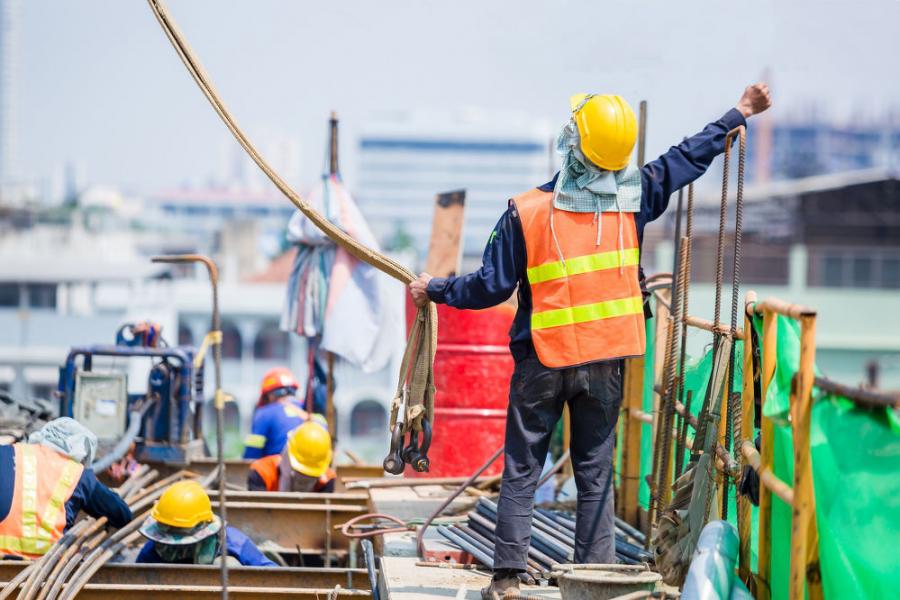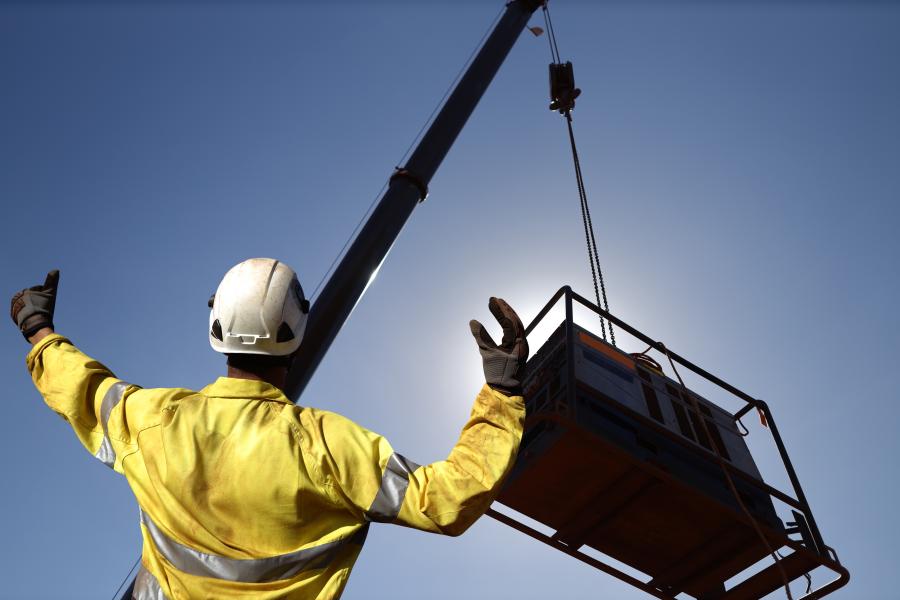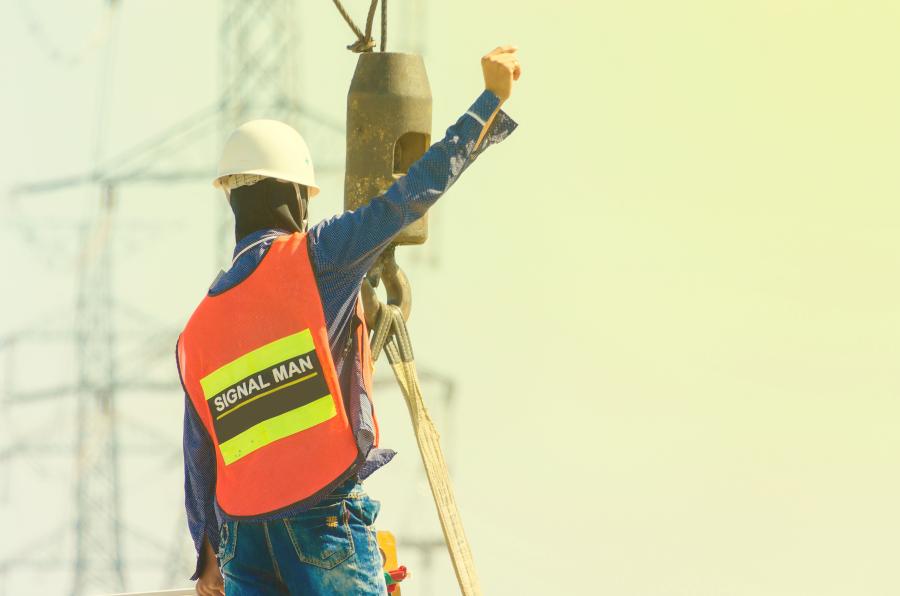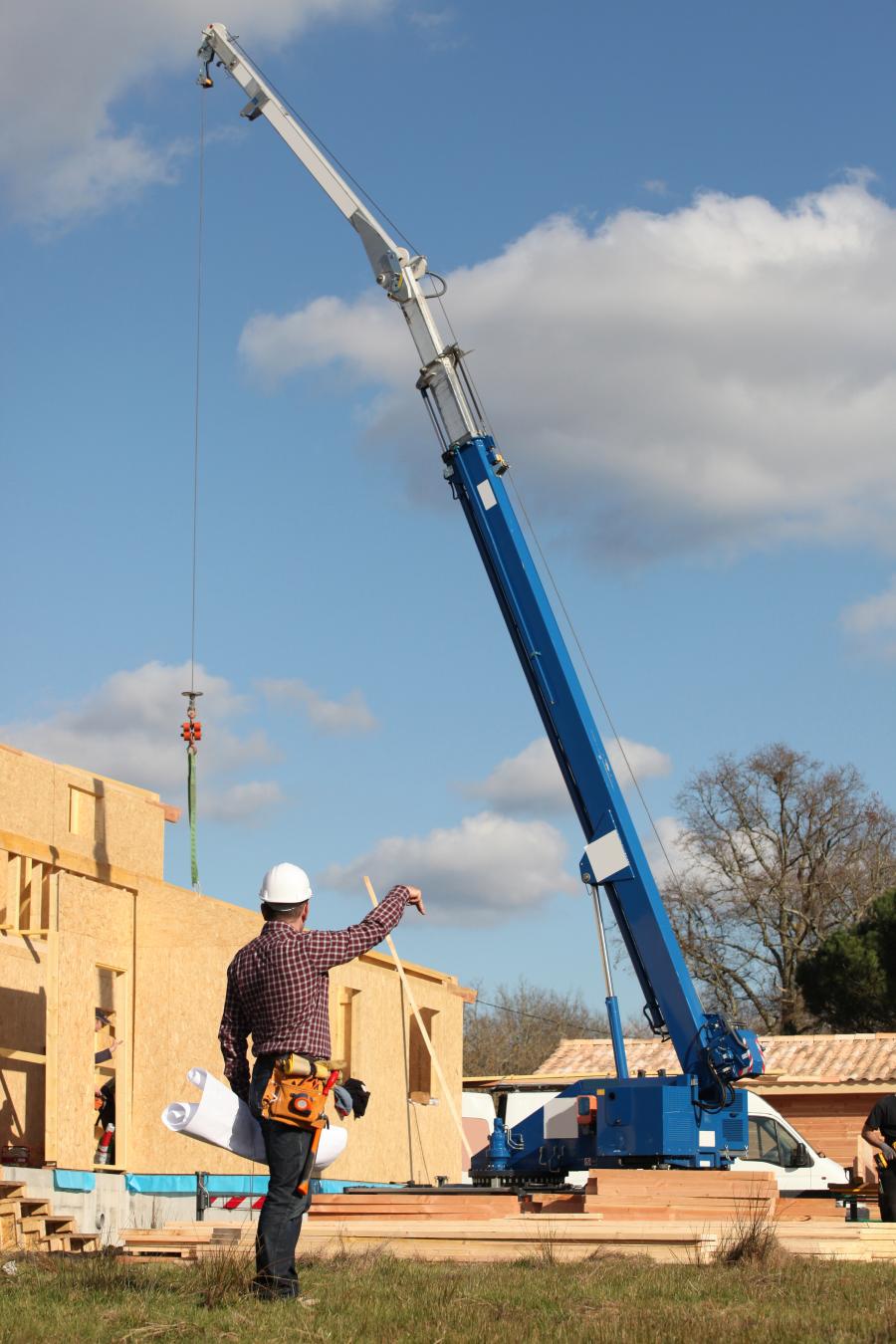OSHA expects a signaler to know and understand each type of signal used at a job site.
The signal person is one of the most critical roles on a construction site where a crane is in operation.
The qualified signaler prevents accidents, ensures solid lift and placement of the load and keeps everyone safe on the ground. The relationship between crane operator and signal person is key to a successful lift.
"Signal persons are essentially the eyes and ears of crane operators and have a vital role to play in guiding operations," said Carmen Zajicek of Crane Warning Systems, Atlanta, Ga.
"Correct signaling and communication are crucial for preventing crane accidents from taking place," she wrote in a blog post for the company, which provides sales, service and support for Rayco Wylie crane indicators. "Crane operators are expected to move loads by adhering to an established code of signals while using the help of a qualified and trained signal person."
The importance of a signal person is heightened during critical lifts where the crane operator's view is obstructed and loads are moved solely based on signals, added Zajicek.
Radio systems are regularly used between the crane operator and ground crew, including the signaler, to communicate. They're often used for signal calling, though systems can malfunction.
Hand signals are instantaneous and highly effective in noisy environments, said Christie Lagowski, communications manager of Columbus McKinnon, Getzville, N.Y.
She believes "it's the supervisors' duty to implement every possible measure that boosts safety and productivity."
Qualified to Make the Call
The signal person is required to be trained and qualified to serve in this role. Only one signaler can take charge at any moment. If the lift requires two signalers who swap duties, the person in charge must have a clear form of identification.
"The crane operator can only follow one signaler at a time and has to obey given signals under every circumstance," according to Zajicek.
OSHA expects a signaler to know and understand each type of signal used at a job site. He or she must be competent in using hand signals.
"When working as a signal person in a facility or at a job site, especially those with lots of traffic, it is crucial to understand and use crane operator hand signals," Lagowski noted in outlining the requirements of a qualified signal person.
"These individuals must know all signals for mobile, tower and overhead cranes and have a basic understanding of crane operation," she said.
Charts identifying these hand signals must be posted on equipment or noticeably near hoisting operations.
"If modifications are made to any signals, they must be agreed upon by the crane operator, lift director and signal person, and cannot conflict with the standard signals," she added.
Before working on the project, the signal person must undergo evaluation by a qualified in-house or third-party evaluator. The signaler must demonstrate his or her knowledge through oral, written or practical tests.
The signaler must understand the crane's operations and limitations including the dynamics involved in raising, swinging, boom deflection, stopping and lowering loads.
And, the signal person must always have a clear view of the crane operator and the work site as a whole. He or she should have a commanding voice.
In his or her safety capacity, the signaler must ensure people remain outside the crane area and must never instruct loads be swung directly over people.
"A signal person is required when the point of operation is not in full view of the operator, or the crane operator's view is obstructed in the direction of where the equipment or load is traveling," according to the Crane Inspection & Certification Bureau (CICB).
Why Qualification Makes Sense
A qualified signal person understands the concepts of speed, clarity, noise and distance working around a crane, said Zajicek.
A qualified signal person knows that relying on hand signals significantly reduces the chances of miscommunication. He or she has the ability to communicate messages faster than speech.
"Anyone who takes on the role of a qualified signal person should be aware of certain responsibilities that go along with the job," noted a Certified Slings blog post.
A qualified signal person is needed not just during standard crane work, but anytime a crane operator does not have a clear range of vision or may feel that their lift area is compromised.
But, added the Casselberry, Fla., company, "just to be on the safe side, crane operators often go above and beyond by requesting a qualified signal person for situations that might not even seem threatening."
The lift director on the job site must appoint a qualified signal person before the lift. During crane operation, only one person can give signals, unless it's for an emergency stop — then anyone on the job site can give the signal, said Lagowski of Columbus McKinnon.
"Once the qualified signal person is identified, the signal person and the crane operator must identify each other prior to giving any signals."
During crane operation, signals should be continuous, she said. If at any time a signal is not understood, is not clear, is disrupted or is not audible, the crane operator must stop movement and not give a response.
When giving signals, all signs should be from the operator's perspective. "So, for example, to designate swing left, the signal person would extend their right arm so the operator would swing left."
In addition to hand signals, voice signals can be used. Voice signals must have direction or function, speed or distance; and stop command of prior function, said Lagowski.
"For example, a voice command may go something like: ‘Hoist 10 feet, 20 feet, 30 feet Stop! Swing right 90 degrees, slowly, slowly, Stop! Lower 10 feet, 20 feet, 30 feet Stop!'"
She wrote that when communicating with more than one crane, a procedure or system must be established to identify which crane that the signal is for.
"This helps avoid confusion on the part of the crane operator, allowing them to easily identify which crane should respond."
Choosing a Qualified Evaluator
As CICB points out, there are many training programs available for signal person qualification. There are also many third-party qualifying organizations in the industry. Be selective when choosing.
"Look for a training company whose curriculum emphasizes the roles and responsibilities of a signal person, proper knowledge of hand signals and knowledge of voice-activated and audible signals," blogged CICB, Orlando, Fla.
A training company well-versed in crane operations and rigging fundamentals with emphasis on rigging inspection, load handling, and how factors such as wind, load and boom deflection, and swing rate can impact load handling and crane operations is critical.
Look for an organization that utilizes the latest ASME and OSHA standards and regulations, including the "new" regulation for working around power lines, as well as interactive, hands-on training, coupled with quizzes and testing, suggested CICB.
"Remember, properly given hand signals reduces accidents and lost work days, and saves lives."
Online training organization e-Training Inc. suggests starting with the National Commission for the Certification of Crane Operators (NCCCO) for info on what it takes to become a qualified signal person.
NCCCO offers a five-part written certification test that covers hand signals, voice communication, basic knowledge of crane operations, site awareness and safety standards and regulations.
Exam parameters, found on the NCCCO certification programs web page, include the candidate's observance of the crane and demonstration of the ability to give the necessary hand and voice signals.
Certified Slings said that for regular work with cranes, all qualified signal persons must familiarize themselves with the details of OSHA's requirements and be aware of all signals that they may encounter in their field.
"They should also take time to learn other signals not commonly associated with crane work," notes the rigging and hardware products manufacturer's blog post.
"More than that, qualified signal persons should show an ability to comprehend and understand what each one means."
Under OSHA regulations, there should also be an understanding of what goes into the entire crane operation process.
"While some might just learn of a crane's load bearing limitations, a qualified signal person should extend their knowledge base to include all aspects of crane operation from load heights to range of motion," according to the blog.
On its website, Certified Slings lists a set of basic hand signals every qualified signal person should have memorized, beginning with most common signal faced on the job.
The Stop motion (one arm extended out horizontally and swung back and forth to the side with palm facing down) can be accompanied by the Emergency Stop signal (same form as the Stop motion but with both arms).
When it comes to the movement of the crane itself, additional steps are necessary, said Certified Slings. Standard hand signals that dictate crane movement include:
- Raise signal — to raise the boom, an arm is extended out to the side with a thumb pointing up.
- Lower signal — the thumb of the extended arm points down to signal that the boom needs lowering.
- Hoist signal — the upward-pointing index finger of a single, raised arm draws small circles to hoist.
- Swing signal — a horizontally extended arm and index finger point in the direction the boom is meant to swing.
"All of these signals are seen in a standard day of crane operation. From there, the signals become more complicated," according to the blog post.
Additional Signaling Notes
The position of a qualified signal person may seem like a solitary job, but it relies on an entire team to maintain safety, said Certified Slings. "Before going to work, any crane team should have a dedicated plan. Every detail should be understood and memorized by each team member."
Once on the site, the entire area should be checked on a daily basis for any obstructions that could block hand signals from being seen. If something seems problematic, all work should stop until the issue can be corrected.
Finally, Certified Slings stressed that if someone feels unsafe during a crane operation, he or she should always report the issue to their team as well as any supervisors. "The details should be noted and addressed immediately. If the signal person feels that correct action has not been taken, then they can report the complaint to OSHA officials." CQ
Lucy Perry
Lucy Perry has 30 years of experience covering the U.S. construction industry. She has served as Editor of paving and lifting magazines, and has created content for many national and international construction trade publications. A native of Baton Rouge, Louisiana, she has a Journalism degree from Louisiana State University, and is an avid fan of all LSU sports. She resides in Kansas City, Missouri, with her husband, who has turned her into a major fan of the NFL Kansas City Chiefs. When she's not chasing after Lucy, their dachshund, Lucy likes to create mixed-media art.
Read more from Lucy Perry here.
Today's top stories


















